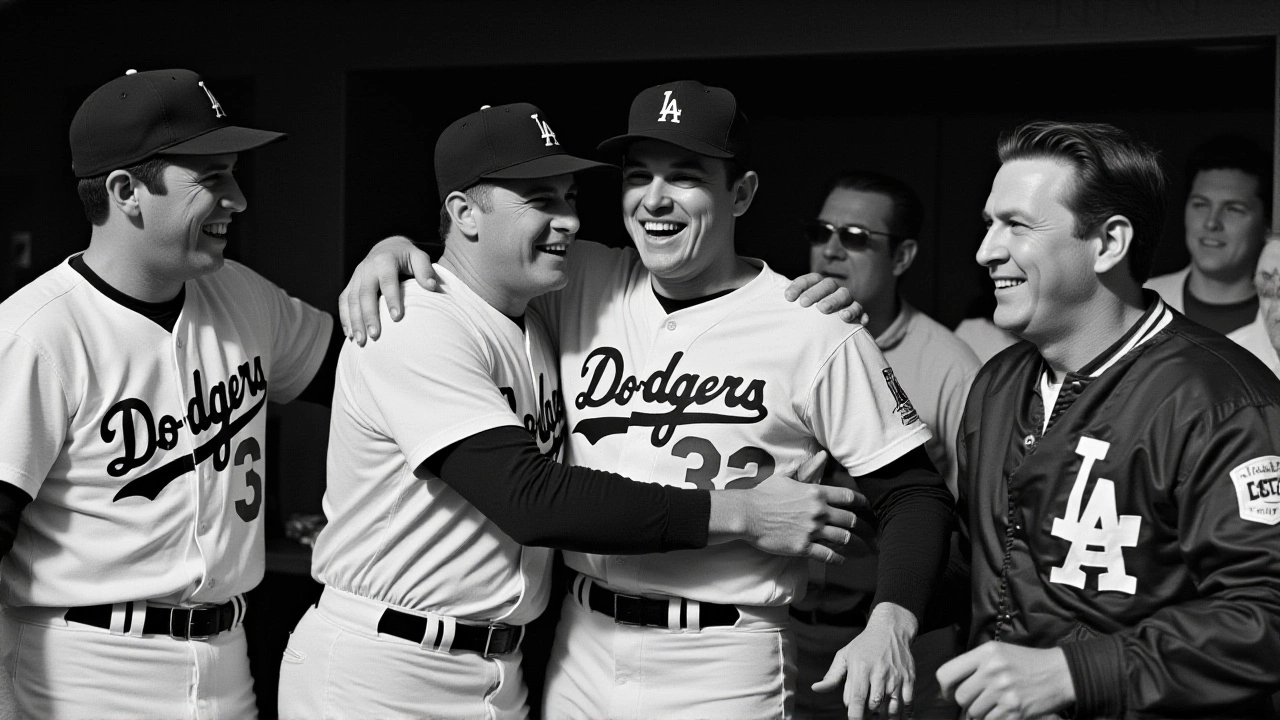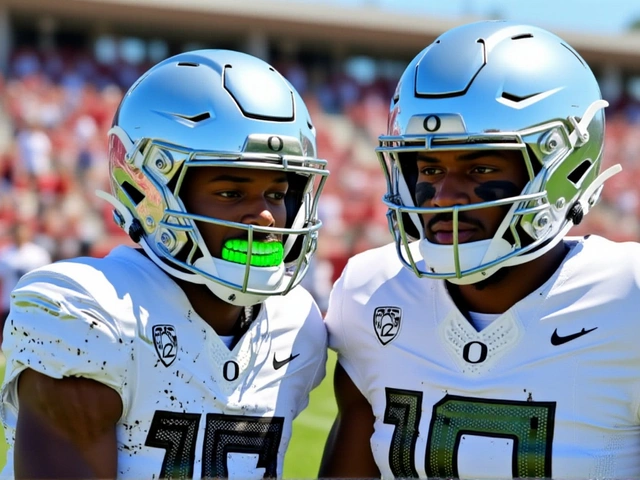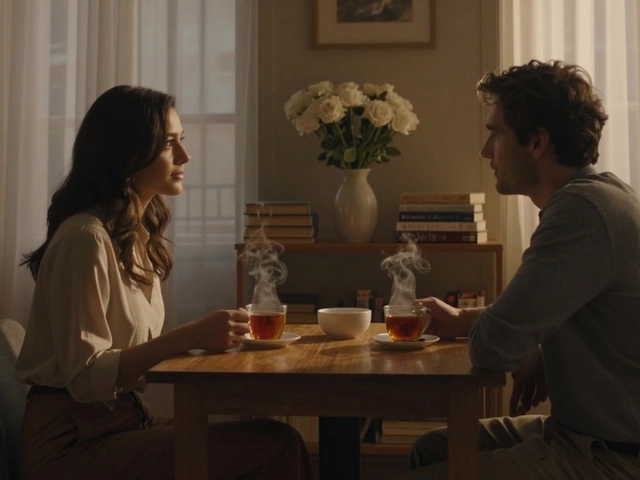On September 9, 1965, under the lights of Dodger Stadium in Los Angeles, Sandy Koufax didn’t just pitch a game—he etched his name into baseball immortality. The Los Angeles Dodgers left-handed ace retired all 27 batters he faced in a 1-0 shutout over the Chicago Cubs, delivering baseball’s first perfect game under night lights and the first ever by a left-hander. With 14 strikeouts, 113 pitches, and a calm that belied the tension, Koufax didn’t just break records—he redefined what dominance looked like on the mound.
The Pitching Duel That Defied Logic
While Koufax’s name would echo through history, the game’s quiet hero was Bob Hendley, the Cubs’ right-hander who matched him pitch for pitch. Hendley allowed just one hit—a double by Lou Johnson—and only two baserunners total. That’s right: two. In nine innings. The Cubs’ offense, led by legends like Ernie Banks and Ron Santo, was utterly silenced. Meanwhile, Koufax was unhittable. He struck out at least one batter in every inning, a feat no perfect game pitcher has repeated since. The final six Cubs hitters went down swinging. Seven of the last nine? Strikeouts.
The lone run came in the seventh. Johnson doubled, advanced on a wild throw by Cubs catcher Chris Krug during a steal attempt, and scored on a sacrifice fly. That’s all the Dodgers needed. Hendley, pitching on fumes and guts, was handed a loss despite throwing 8.2 innings of no-hit ball. It remains one of the most heartbreaking performances in MLB history.
Vin Scully’s Voice, The Crowd’s Silence
There was no TV broadcast. No video footage. But Vin Scully, the Dodgers’ legendary radio voice, knew this was history. Before the ninth inning, he told his crew: “Let’s make a recording.” The result? One of the most haunting, beautiful calls in sports history. As Harvey Kuenn stepped in for the final out, Scully’s voice dropped to a whisper: “Two strikes… and here’s the pitch… swung on and missed. A perfect game!”
He’d earlier described the atmosphere: “And there’s 29,000 people in the ballpark and a million butterflies.” That line lives on—not because it was poetic, but because it was true. The crowd didn’t cheer. They held their breath. You could hear the crack of the bat, the thump of the glove, the rustle of a program turning. It was sacred.
A Record-Breaking Career at Its Peak
Koufax’s perfect game was his fourth no-hitter—and the first by any pitcher in four consecutive seasons. He broke Bob Feller’s record of three. He was 29. He’d already won the 1963 Cy Young Award. He’d be named an All-Star for the fifth straight year in 1965. He’d finish the season 26-8 with a 2.04 ERA. The next year? 27-9. Then, at 30, he walked away.
Why? Arthritis in his left elbow. The same arm that threw 113 pitches that night, 14 strikeouts, and 4 no-hitters in 4 years, was breaking down. He didn’t want to be a shadow of himself. So he retired. No fanfare. No farewell tour. Just silence. And legend.

The Aftermath and Legacy
Frank Finch of the Los Angeles Times called Koufax “a Michelangelo among pitchers.” The comparison stuck. He wasn’t just a pitcher—he was an artist who painted with velocity and movement. His curveball didn’t just break; it vanished. His fastball didn’t just reach 95 mph—it felt like it was coming from another dimension.
Even today, Koufax’s perfect game is studied. Pitchers analyze his grip, his motion, his mental focus. The fact that he struck out the final batter—Harvey Kuenn—who was also the last out of his second no-hitter in 1963? That’s not coincidence. That’s destiny.
The umpiring crew—Ed Vargo, Chris Pelekoudas, Bill Jackowski, Paul Pryor—never had to make a controversial call. Not one. The game was flawless. And so was Koufax.
What Made This Game Unrepeatable?
Consider this: Koufax threw 79 strikes out of 113 pitches. That’s 70%—an absurd efficiency for a power pitcher. He faced the heart of the Cubs’ order—Santo, Banks, Browne—in the eighth and struck out all three. He didn’t just dominate; he demoralized. And he did it in front of 29,139 people who knew they were witnessing something no one else ever had.
Modern pitchers throw harder. They use analytics. They have pitch counts. They rest more. But none have matched Koufax’s blend of power, control, and clutch. The 1965 perfect game remains the only one with 14 strikeouts. No left-hander has done it since. No one has done it at night. No one has done it with fewer baserunners.
Frequently Asked Questions
Why is Sandy Koufax’s perfect game still considered the greatest pitching performance in MLB history?
Because it combined unprecedented statistical dominance with emotional weight. Koufax struck out 14 batters in a perfect game—the most ever—and did so against a strong Cubs lineup featuring Hall of Famers. He threw 113 pitches with 79 strikes, showing elite control. No left-hander has replicated it, and no pitcher has thrown a perfect game at night with that level of strikeout volume. Add Vin Scully’s iconic call and Koufax’s sudden retirement, and it becomes mythic.
How did Bob Hendley’s performance compare to Sandy Koufax’s that night?
Hendley was nearly as dominant: one hit, two baserunners, no runs in nine innings. He’s one of only two pitchers in MLB history to allow one hit and no walks in a complete game loss. His 8.2 innings of no-hit ball remain among the most valiant efforts in baseball history. But unlike Koufax, Hendley didn’t get the win—or the immortality. He was simply outpitched by a once-in-a-lifetime talent.
Why didn’t Sandy Koufax pitch beyond 1966?
Koufax retired at age 30 due to severe arthritis in his left elbow, a direct result of years of overuse and the physical toll of his violent, high-velocity delivery. He feared losing control or becoming ineffective. Despite being at the peak of his powers—with a 27-9 record in 1966—he chose to walk away rather than risk injury or decline. His decision shocked baseball, but it preserved his legacy as a flawless, untouchable force.
Was the game televised, and why is Vin Scully’s call so famous?
No, the game wasn’t televised—only broadcast on radio. Scully, knowing its historic weight, ordered his crew to record the final inning. His call—“Swung on and missed, a perfect game!”—is revered because it captured the silence, the tension, and the awe of the moment without embellishment. His phrase, “a million butterflies,” became iconic because it conveyed the collective breath-holding of 29,000 fans. That recording is now preserved in the Baseball Hall of Fame.
Has any pitcher since Koufax thrown a perfect game with 14 or more strikeouts?
No. Koufax’s 14 strikeouts remain the record for any perfect game in MLB history. Even modern aces like Félix Hernández (2012) or Matt Cain (2012) struck out fewer—12 and 14 respectively. Cain tied the record, but Koufax still holds the distinction of being the only left-hander to do it, and the only one to do it under lights. The combination of strikeouts, efficiency, and era makes his feat uniquely unrepeatable.
What impact did this game have on the Chicago Cubs’ franchise?
The loss was a crushing moment for the Cubs, who were still decades away from their 2016 World Series title. It underscored their struggles in the 1960s, despite having stars like Banks and Santo. The game became a painful footnote in their history—a reminder of how close they came to greatness, only to be outclassed by a once-in-a-generation pitcher. Today, Cubs fans regard it with a mix of awe and sorrow, acknowledging Koufax’s brilliance even as they mourn what might have been.




